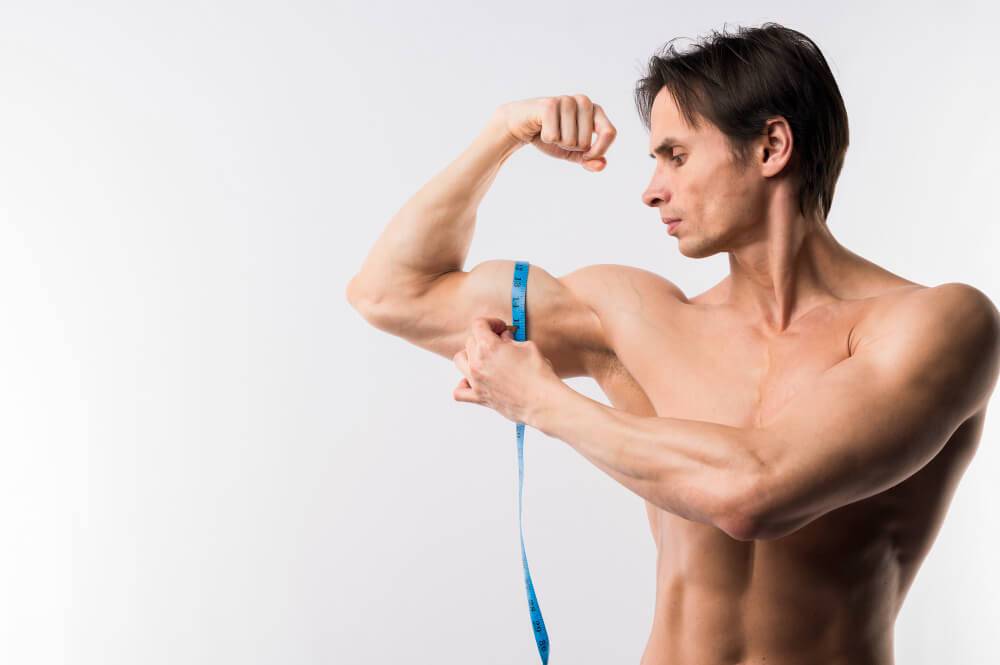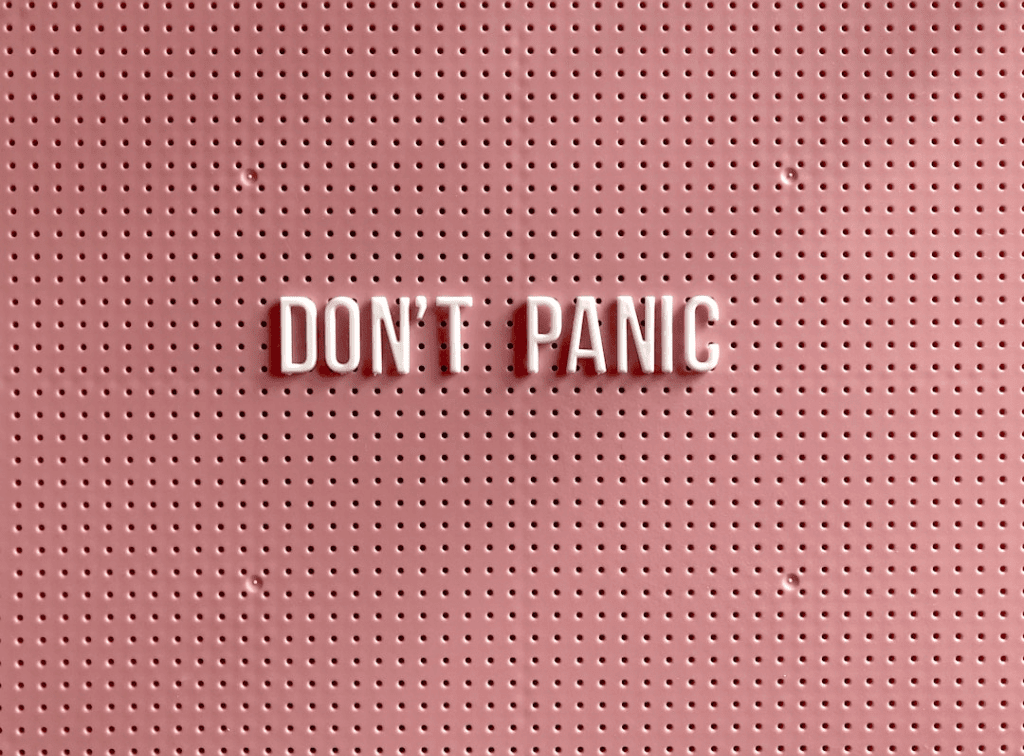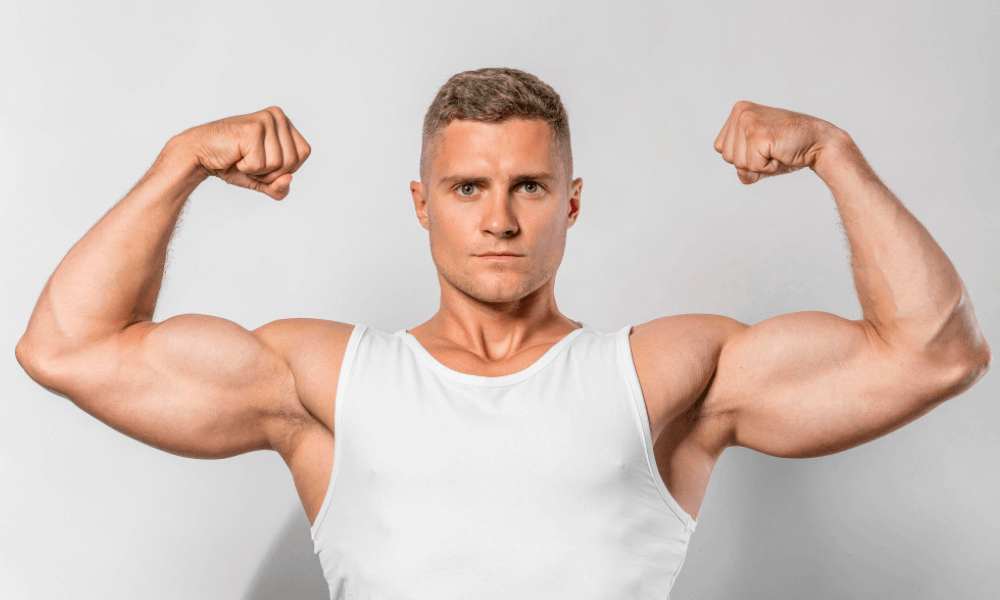For fitness enthusiasts, the quest for a sculpted and robust upper body is often synonymous with the importance of an ironclad chest workout. The pectoral muscles not only contribute to aesthetic appeal but also play a significant role in everyday functionality and overall strength.
Chest cable exercises, known for their ability to provide constant tension and a wide range of motion, are a powerful tool in anyone’s muscle-building arsenal.
This comprehensive guide unveils the top 10 cable chest exercises you should be incorporating into your workout routine, ensuring that you achieve maximum muscle gain and a well-defined, powerful chest.
Chest Anatomy
Understanding chest anatomy is crucial for optimizing your workout and achieving desired results. The chest, or pectoral area, consists mainly of two muscles: the pectoralis major and the pectoralis minor. The pectoralis major is the larger of the two, starting from the clavicle (collarbone), ribs, and sternum (breastbone) and inserting into the humerus (upper arm bone). This muscle is responsible for the primary movements of the shoulder joint, including flexion, adduction, and internal rotation.

The pectoralis minor, situated beneath the pectoralis major, originates from the anterior surface of the third to fifth ribs and inserts at the coracoid process of the scapula. It plays a crucial role in the movement of the shoulder blade, including downward rotation, protraction, and depression of the scapula.
A well-rounded chest workout should aim to target both of these muscles through exercises that involve pushing movements, like bench presses, push-ups, and chest flys, to promote muscle growth and improve overall chest appearance and functionality. Understanding the anatomy of the chest can help in fine-tuning exercise techniques for better effectiveness and reduced risk of injury.
Why Prioritize Chest in Your Workout Routine?
The chest, one of the largest muscle groups in the upper body, comprises the pectoralis major and minor muscles.
Strengthening your chest muscles not only enhances your physique but also supports upper body movements such as pushing, which is integral to various activities ranging from sports to plain daily chores.
Targeting these cable exercises for chest ensures that you develop not only size but also functional strength, contributing to a well-rounded upper body.
The Top 10 Cable Chest Exercises
Here’s the moment you’ve been waiting for—detailed descriptions of the ten most effective cable chest exercises. With each exercise, we’ll discuss proper form, the targeted muscle groups, and tips to ensure you make the most out of every rep and set.
In this article, I have listed 10 cable chest exercises. If you want to know about more exercises, click here and here, they have listed 16 and 15 exercises respectively.
Low Cable Crossover
Cable chest exercises like the low cable crossover is a fantastic exercise for focusing on the pectoralis major, providing novel angles of tension on your chest. To perform the low cable crossover:
- Stand with your feet shoulder-width apart, equidistant to the cable columns on either side.
- Keep a slight bend in your elbows as you bring your hands up and together in front of your body.
- Hold the contraction at the front for a brief moment before slowly returning to the starting position.
Muscle Groups Targeted:
- Pectoralis Major (Sternal Head)
- Pectoralis Major (Clavicular Head)
Tips for Maximum Effectiveness:
- Ensure your back remains straight and core-engaged to prevent arching.
- Focus on a controlled movement, feeling the stretch and contraction in your chest throughout.
Recommended Sets and Reps:
- 3-4 sets of 10-12 reps
Standing Cable Fly
The standing cable fly is an excellent exercise for targeting the chest while engaging the core and stabilizer muscles. To execute the standing cable fly:
- Stand with feet shoulder-width apart, facing away from the cable column with D-handles attached at chest level.
- Hold one handle in each hand and extend arms outward, maintaining a slight bend in your elbows (do not lock them).
- Slowly bring your arms together in front of you, hugging an invisible barrel, until your hands meet in the center.
- Keep your shoulders back and don’t allow your body to sway as you perform the movement.
Muscle Groups Targeted:
- Pectoralis Major
- Anterior Deltoids
Tips for Maximum Effectiveness:
- Focus on squeezing the chest at the top of the movement.
- Use a weight that allows you to maintain control throughout the entire range of motion.
Recommended Sets and Reps:
- 3-4 sets of 10-12 reps
Cable Chest Press
Cable chest exercises like the chest press is a variation that mimics the pressing motion of a barbell or dumbbell bench press. Here’s how to do it:
- Attach D-handles or straight bars to the upper cable columns.
- Stand with feet shoulder-width apart, facing away from the cables.
- Grip the handles with an overhand grip, and push the handles forward until your arms are extended.
- Slowly bring your arms back to the starting position, maintaining a controlled movement.
Muscle Groups Targeted:
- Pectoralis Major
- Anterior Deltoids
- Triceps Brachii (long head)
Tips for Maximum Effectiveness:
- Ensure your elbows don’t flare outwards excessively.
- Keep your core tight to prevent swaying.
Recommended Sets and Reps:
- 3-4 sets of 10-12 reps
High to Low Cable Chest Fly
The high to low cable chest fly is a compound movement that provides an intense workout for the entire chest area. To perform the exercise:
- Stand with feet shoulder-width apart, facing the cable column with the pulley set high.
- Grip the D-handles or stirrup handles, arms slightly bent, and palms facing down.
- Pull your arms down and together in front of your body, maintaining a slight bend in the elbow.
- Return to the starting position under control, feeling the stretch in your chest.
Muscle Groups Targeted:
- Pectoralis Major
- Serratus Anterior
Tips for Maximum Effectiveness:
- Focus on keeping the chest up and maintaining an upright posture.
- Use a weight that allows you to complete the movement through a full range of motion with proper form.
Recommended Sets and Reps:
- 3-4 sets of 10-12 reps
Single-Arm Cable Chest Press
The single-arm cable chest press provides unilateral focus and helps to correct any potential strength imbalances between sides. To perform the exercise:
- Attach a handle or D-handle to one side of the cable column at chest height.
- Stand with feet hip-width apart, facing away from the cable, and grab the handle with your palm facing inward.
- Press the handle forward until your arm is fully extended.
- Slowly return to the starting position under control, keeping your core tight and avoiding excessive torso rotation.
Muscle Groups Targeted:
- Pectoralis Major
- Anterior Deltoids
- Triceps Brachii (long head)
Tips for Maximum Effectiveness:
- Engage your legs for stability and balance.
- Avoid leaning too much into the press to maintain a strong, stable base.
Recommended Sets and Reps:
- 3-4 sets of 10-12 reps per arm
See Also: 13 Best Cable Machine Exercises
Seated Cable Chest Press
The cable chest press with straight arms is an advanced version of the standard cable chest press, requiring strong stabilization and focused chest activation. Here’s how to perform the exercise:
- Attach two D-handles to the upper cable column and sit facing away from the machine.
- Grab the handles with your palms facing at opposite and press them forward until your arms are fully extended.
- Hold the straight-arm position for a count, then return to the starting position under control.
Muscle Groups Targeted:
- Pectoralis Major
- Anterior Deltoids
- Triceps Brachii (long head)
Tips for Maximum Effectiveness:
- Choose a challenging weight that allows you to maintain proper form.
- Focus on keeping your wrists aligned with your forearms.
Recommended Sets and Reps:
- 3-4 sets of 10-12 reps
Cable Incline Press
The cable incline press targets the upper portion of the pectoral muscles, providing a well-rounded workout for the chest. Here’s how to perform the exercise:
- Adjust the cable machine to the lowest incline and attach the handle to both ends.
- Sit on the bench with your feet flat on the ground and your back firmly against the padding.
- Grasp the handle and press upward and together, fully extending your arms.
- Slowly return the handles to the starting position, controlling the weight and feeling the stretch in your chest.
Muscle Groups Targeted:
- Pectoralis Major (Upper Head)
- Anterior Deltoids
- Triceps Brachii (long head)
Tips for Maximum Effectiveness:
- Ensure the bench is set to a comfortable incline that you can manage with proper form.
- Keep your feet flat on the ground for stability.
Recommended Sets and Reps:
- 3-4 sets of 10-12 reps
Cable Decline Press
The cable decline press targets the lower chest and provides another plane to stimulate muscle growth. To perform the exercise:
- Adjust the cable machine to the highest decline and attach the handle to both ends.
- Lie on the bench with your head lower than your feet, feet secured under the provided pads, and back against the bench.
- Grasp the handle and push upward and together until your arms are fully extended.
- Slowly release the handles back to the starting position under control, feeling the contraction in your lower chest.
Muscle Groups Targeted:
- Pectoralis Major (Lower Head)
- Anterior Deltoids
- Triceps Brachii (long head)
Tips for Maximum Effectiveness:
- Ensure the decline angle is suitable for your comfort and strength level.
- Use a weight that allows you to maintain a full range of motion.
Recommended Sets and Reps:
- 3-4 sets of 10-12 reps
See also: Best of 8 Body Composition Exercises
Reverse Grip Cable Chest Press
The reverse grip cable chest press is a unique exercise that shifts the emphasis to the upper chest and requires a different hand positioning for the handles. Here’s how to perform the exercise:
- Attach the D-handles to the upper cable column and stand facing away from the machine.
- Grab the handles with an underhand grip, palms facing upward, and press the handles together and upward until your arms are fully extended.
- Slowly return to the starting position under control while maintaining a slight bend in your elbows.
Muscle Groups Targeted:
- Pectoralis Major (Upper Head)
- Anterior Deltoids
- Triceps Brachii (long head)
Tips for Maximum Effectiveness:
- Start with a lighter weight to get the feel of the reverse grip.
- Keep your wrists straight and elbows from flaring too much to the sides.
Recommended Sets and Reps:
- 3-4 sets of 10-12 reps
Cable Chest Pull-Over
The cable chest pull-over is an isolated exercise that emphasizes the lower portion of the pectoralis major. To perform the exercise:
- Attach a straight bar to the upper cable column and lie on a flat bench.
- Grip the bar with both hands and keep your arms extended, perpendicular to your body.
- Keeping your arms straight, pull the bar over your head toward the floor behind you until you feel a stretch in your chest.
- Return to the starting position, focusing on the chest muscles to move the weight.
Muscle Groups Targeted:
- Pectoralis Major (Lower Head)
Tips for Maximum Effectiveness:
- Use a lighter weight to start and ensure you maintain control throughout the movement.
- Stabilize your core and torso to avoid arching your back.
Recommended Sets and Reps:
- 3-4 sets of 10-12 reps
How to Incorporate These Exercises into Your Training Program
When designing your workout program, it’s crucial to plan when and how you’ll incorporate these ten exercises to optimize your results.
You can structure your weekly regime around upper body split sessions, focusing on compound movements like the bench press and complementing them with chest exercises with cable on a different session.
Weekly Workout Plan Example:
- Day 1: Bench Press (4 sets of 6-8 reps) and Low Cable Crossover (3 sets of 10-12 reps)
- Day 3: Standing Cable Fly (3 sets of 10-12 reps) and Single-Arm Cable Chest Press (3 sets of 10-12 reps per arm)
- Day 5: Cable Incline Press (3 sets of 10-12 reps) and Cable Chest Pull-Over (3 sets of 10-12 reps)
Remember to adjust your weight and increase resistance gradually. Also, ensure that you take rest days between your intense chest workouts to allow for muscle recovery.
With consistency and proper form, you’ll see improvements in your chest strength and size. So go ahead and incorporate these cable chest exercises into your training program for a well-rounded chest workout. Keep pushing yourself, and results will follow!
Benefits of Cable Exercises
Cable machines offer several advantages over free weights or other resistance equipment when it comes to chest development. These include:
- Constant Tension: The pulley system maintains tension throughout the exercise, leading to an increased time under tension for your muscles, which is crucial for muscle growth.
- Versatility: Cables allow for multi-planar movement and unilateral exercise, helping to correct imbalances and provide varieties of workout styles.
- Reduced Momentum: Unlike with free weights, you are less likely to cheat with momentum, ensuring that your chest muscles are the primary drivers of the exercise.
- Safety: Cables reduce the risk of injury due to weight instability, and it’s easier to perform drop sets or strip sets without compromising form.
Incorporating cable chest exercises into your training program can help you achieve a well-defined, balanced, and strong chest. Remember to maintain proper form and gradually increase weight or resistance for optimal results.
Real Stories of Success and Transformation
This would be the perfect place to share real-life testimonials from individuals who have seen significant improvements in their chest development by incorporating cable exercises into their workout routines.
Personal stories can provide encouragement and serve as relatable sources of inspiration for your readers. Here are a few examples of potential testimonials:
- “I used to struggle with building my chest muscles until I started incorporating cable exercises into my training program. Now, I have a more defined and balanced chest that I’m proud of!”
- “As someone who suffered from a shoulder injury, cables have been essential in helping me regain strength and stability in my upper body. The constant tension and controlled movements have made a significant difference in my chest development.”
- “I’ve been stuck at a plateau with my chest gains for months, but after adding cable exercises to my workouts, I finally started seeing progress again. I wish I had started using cables sooner!”
Beginner’s Guide
For beginners, transitioning to cable chest exercises can be both challenging and rewarding. It’s crucial to start with light weights and focus on mastering the form before adding more resistance.
Gradually increase the weight as you become comfortable and always prioritize safety to avoid injury and setbacks.
Here are some additional tips for beginners:
- Maintain a slow and controlled pace, placing emphasis on your chest muscles working throughout the exercise.
- Practice mindfulness with each rep, focusing on the muscle-mind connection to ensure proper muscle engagement.
- Always learn from a knowledgeable trainer or experienced lifter for the correct posture and form.
- Don’t neglect the basics, as compound exercises like the bench press are fundamental to building a strong chest. Use cable exercises as a complement to your foundational movements.
Nutritional Strategies for Optimal Muscle Growth
To complement your chest workout routine, implementing the right nutritional strategies is just as crucial for optimal muscle growth and recovery. A balanced diet rich in protein, healthy fats, and carbohydrates fuels your body for performance and aids in the repair process after intense sessions.
Protein Intake
Focus on consuming high-quality protein sources such as chicken, fish, beef, eggs, and plant-based alternatives like lentils and chickpeas. Aim for 1.2 to 2.0 grams of protein per kilogram of body weight daily to support muscle repair and growth.
Carbohydrates
Carbohydrates are your body’s primary energy source. Include complex carbohydrates like whole grains, fruits, and vegetables in your diet to maintain energy levels during workouts and promote recovery afterward.
Healthy Fats
Incorporate sources of healthy fats such as avocados, nuts, seeds, and olive oil to support overall health, reduce inflammation, and aid in the absorption of fat-soluble vitamins.
Hydration
Staying adequately hydrated is essential for optimal performance in the gym. Water plays a key role in transporting nutrients to your cells and removing waste products from your body. Aim to drink at least 8 glasses of water a day, and more if you are engaging in prolonged or intense exercise sessions.
Conclusion
With these top 10 cable chest exercises, you have the blueprint for a comprehensive chest workout that promises growth, strength, and definition. You can also checkout this article for more detailed information about chest anatomy.
By incorporating these exercises with purpose and dedication, you’re on track to cultivate a powerful and impressive chest that’s not only a testament to your hard work but also an essential asset in your fitness journey.
Harness the potential of cable machines, and witness your chest routine evolve into something truly transformational. You can find more blog posts like this on our Blog page.









